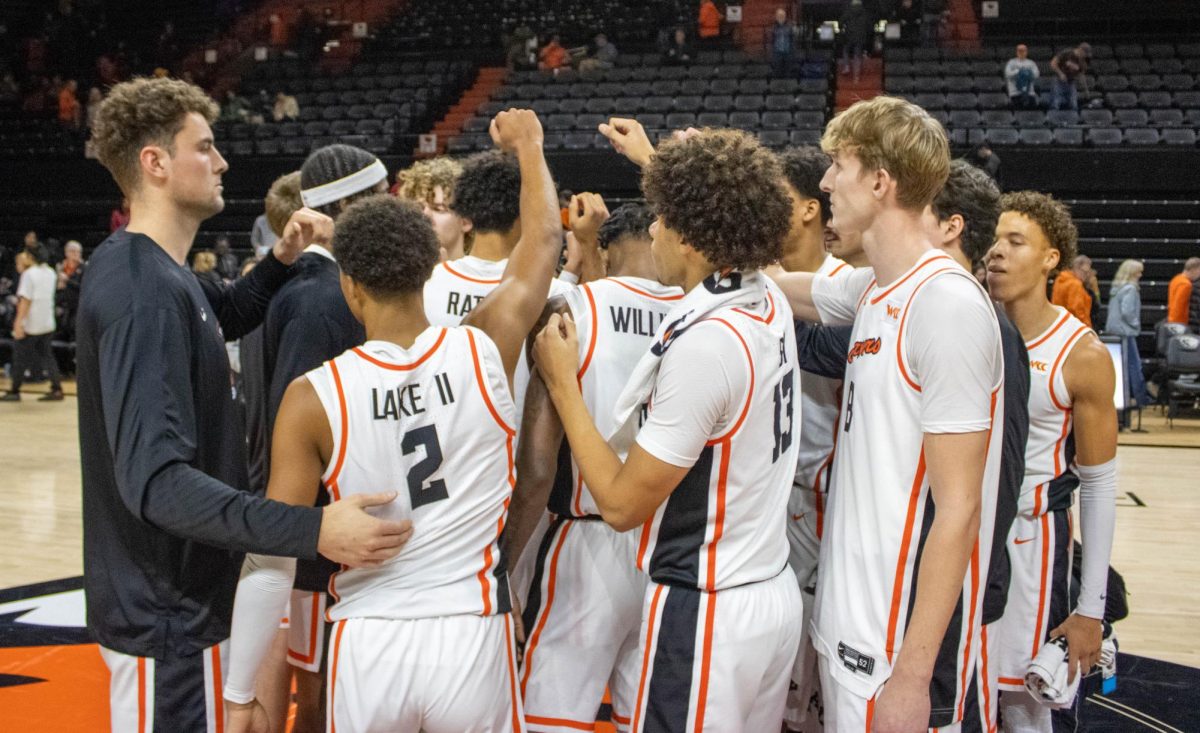One day Corvallis is known as the best college town in the PAC-12, the next the PAC-10, then the PAC-4, and now… the PAC-2.
The end of July and early August 2023 brought rapid news of what has been described as an unprecedented college athletic conference realignment. Leaving the two flagship universities in the state of Oregon in two different conferences.
With restraining orders in place, talks of a $40 million deficit affecting Oregon State University’s athletics with trickling effects to the community as a whole, and the idea of restitution from other universities, what does all of this legislative action mean and where does it stand nearly two months later?
Where we’ve been, a recap of events:
- 2024 PAC-12 media deal is set to end, calling for a new kind of media deal
- June 30, 2022 – University of Southern California & University of California Los Angeles announce plans to leave PAC-12 to join Big-10 conference
- July 27, 2023 – University of Colorado Boulder announces they will leave to join Big-12
- Aug. 5 – University of Oregon, University of Washington leave for the Big-10. Arizona State University, University of Arizona,and University of Utah announced their leave for the Big-12 conference
- Sept. 1 – Stanford and University of California Berkeley announce their leave to the Atlantic Coast Conference leaving Washington State University and OSU the two remaining schools in the formerly twelve-school conference.
- Sept. 5 – Associated Students of OSU hold a town hall for students to ask questions with OSU President Jayathi Murthy and Vice President and Athletic Director Scott Barnes.
- Sept. 8 – OSU and WSU file joint restraining order against the PAC-12 commissioner and departing universities to prevent the dissolution of the conference which would have evenly divided the conference’s assets among all the member schools.
- Sept. 11 – A restraining order is granted, therefore, preventing the members of the PAC-12 Board from any action that would require a board vote
- Sept. 28 – Oregon Legislature House Interim Committee on Higher Education holds a hearing including testimonies from those representing UO and OSU on the impacts on the state and OSU following the conference realignment
- Nov. 7 – The House Higher Education Committee met once again with OSU leadership in attendance clarifying athletic’s financial deficits and impact as well as what the OSU President believes the legislature’s role should be in overseeing these institutions who all are governed by individual boards. The meeting was purely informative and suggested that any state financial help to OSU would have to come from the budget committee later in the 2024 session.
“The decision to pull out of the PAC-12 by the University of Oregon and University of Washington, two state institutions, was made very quickly with little regard to the fallout for sister institutions and to taxpayers and with little time to address alternatives,” said OSU President Jayathi Murthy in the Sept. 28 House Interim Committee on Higher Education committee hearing.
While the state legislature did not make any decisions in the hearing, OSU and Corvallis representatives were able to voice the impact that realignment will have on both the university and the town.
In the hearing, Scott Barnes, vice president and director of intercollegiate athletics shared that there is a over $40 million drop in revenue in the next year alone due to the realignment.
According to Barnes, his top financial priority is to preserve the $10.4 million commitment to student-athlete scholarships, a priority that he asked the legislature for support.
How and if that request for support will be met by the state legislature is uncertain.
“It’s not just about football, right? There’s economic impacts on the state. And when (there are) two flagship institutions of the state, one’s departure from the PAC-12 significantly and directly impacts the fiscal future of the other one,” said Joe Page, a graduate student in the College of Health and member of Beaver Caucus, the legislative advocacy wing of the OSU Foundation.
One idea that had been mentioned at the hearing was similar to Cal’s response to UCLA leaving the conference where one institution offers aid in financial deficits of the other.
“So when they announced that they were leaving, The University of California Board of Regents said, ‘okay, that’s fine, you can leave the PAC-12’ but, they set up this deal with UC Berkeley that (UCLA) had to pay a certain amount,” Page said, explaining the situation in California that could be a reality for the two Oregon schools.
Another possibility mentioned by Barnes in the hearing was that when it comes to filling this financial gap brought on by realignment, it could come from tuition and other fees, although this is a last resort and a distant possibility Page assures.
“There is no intention of utilizing the incidental fee to offset any expenses or revenues lost as a result of conference realignment right now,” Page said. “Students should not worry… in the context of PAC-12 realignment and athletics, a concern that (the fee) is going to increase as a result of (realignment) at this time.”
As for the student legislative role in the situation, Carissa O’Donnell, ASOSU president, says that they have been working to provide clarification to students on the matter when they can.
“University leadership is… when they’re able to, they’re kind of looping (ASOSU) in and letting us be a part of some of those discussions so that they can get the student consensus on what an opinion might be, and then we can also kind of see what’s going on and communicate with students,” O’Donnell said.
In the unlikely but possible scenario where lost athletic revenue is made up through outlets that directly affect the student body as a whole, O’Donnell would encourage students to share their thoughts.
“We would encourage students to come and voice their opinions on what that might be,” O’Donnell said. “The student incidental fee and the fee setting process is the most direct way for students to get involved in their tuition spending.”
As for the status of the PAC-12 itself, Page explains that the conference cannot be dissolved due to the active restraining order but largely the conference’s future is still up in the air.
“There will be no (PAC-12) board meetings and the PAC-12 commissioner can continue to transact business in the normal course,” Page said. “If members agree unanimously on any one subject, then action can be adopted. But all schools, including departing schools, have to be unanimous in agreement.”
Ultimately Page and O’Donnell agree that while students and the community seem to be in the dark about how this situation will shake out for OSU – having heard no information on a plan forward yet – they trust that University leadership is doing all they can.
“They’re just as hurt and upset and angry about it as students are, and they are doing everything they can to make sure that what ends up happening is best for students, for student-athletes, for the university,” Page said. “I think that I have to believe that it will all work out, and I think that it will. Maybe we don’t know what that looks like yet, but I do know that everyone is working really hard to make that happen.”
Upcoming action and future alignment:
As for legislative action or intervention coming to fruition, nothing has been announced. The House Interim Committee on Higher Education has scheduled another hearing for Nov. 7, it is uncertain if there will be any decisions made in regard to OSU support and conference realignment fallout.
On the side of OSU’s search for a conference in the 2024-2025 season, no announcements have been made and the OSU Athletic Department has declined to comment at this time.














































































































